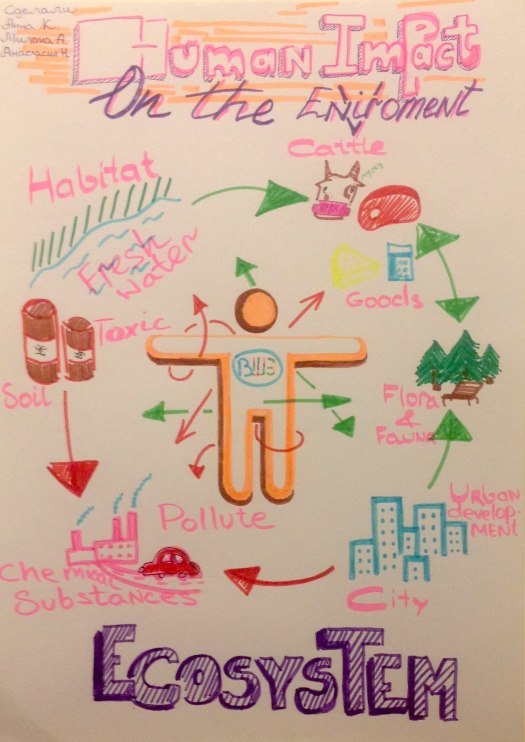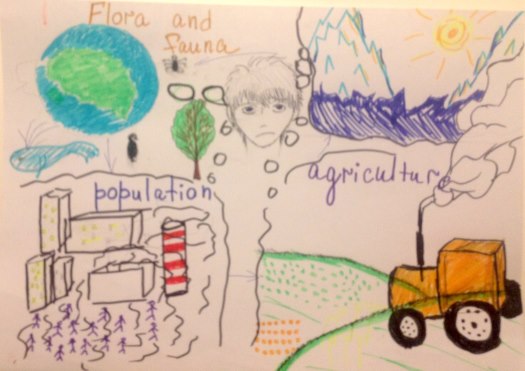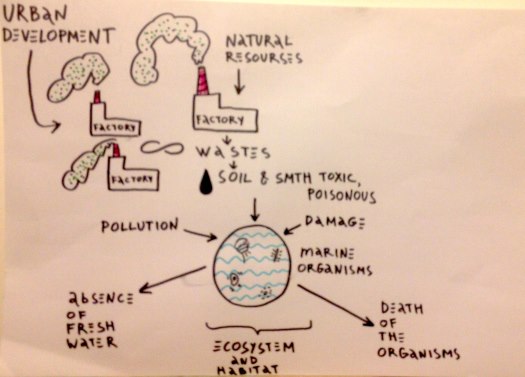Bonnie Tsai Scholarship
Natalia Mukhina teaches English at the Higher School of Economics in Moscow, She is interested in implementing creativity and innovation in the present-day classroom. E-mail: ornata2000@mail.ru.

Winner of the Bonnie Tsai Scholarship for 2018: The Role of Creativity in my Classroom. Studying and Using Vocabulary Creatively and Collaboratively
Menu
The role of creativity in my classroom
Studying and using vocabulary creatively and collaboratively
The role of creativity in my classroom
The course I teach currently is an IELTS-preparation course which is mostly aimed at developing various academic skills and exam-skills and there is almost no space in it for the enhancement of students’ language skills. However, the students come to the course hoping that they will upgrade their level of English and quickly get disappointed when the focus at the classes is mainly on building skills necessary to pass the IELTS exam. As they get frustrated they lose interest in the tasks provided by the coursebook, they end up copying the answers from the key instead of actually doing their homework. In this context using creative tasks seems the only possible way to involve those students.
The greatest advantage of creative tasks is that they don’t have the only correct answer. There is simply nowhere and nothing to copy from. When students are asked to create a unique project work or to write a story with the use of the key vocabulary, or design a poster reflecting the issues they had to read about, they have no other way but do it. And not only do it, but also to work out what they need to study and understand to be able to complete the given task. That is quite hard and unexpected for most of my students who are so used to typical mechanical tasks they’ve been doing in the last years of school getting ready to the state exam. They need to make an effort and come up with new ideas, their brain is fully engaged and that is when actual learning happens, that is when they apply all that they have learned or study what they have missed.
Another invaluable feature of creative tasks is that for most students they are highly motivating. Most of my students seem to have this deeply seated craving to create and to express themselves. They need to be given this freedom to demonstrate their potential thus presenting themselves as personalities. That is why they usually get excited and inspired when they have this opportunity to stand out. Apart from that the result they get quite often surpasses their expectations, so they are extremely proud of their work and wish to continue doing it. As an illustration to this point I’d like to mention the frequent cases with writing a story. When I ask my students to produce a short piece of creative writing, their first reaction is often bewilderment and even irritation. But when I push them beyond this boundary, they discover a whole new side of themselves, they are grateful and inspired to do even more writing.
Thus all my observations prove that applying Creativity in teaching and learning is not only a way to amuse the students, but a powerful tool to reach the most ambitious educational goals.
Studying and using vocabulary creatively and collaboratively
Context
The following lesson was designed for university students of the first or second year with the level of English around Upper-Intermediate. It is also necessary to mention that while creating this set of tasks I relied on the fact that students have quite a lot of background knowledge about environmental problems as it is widely discussed at school. The course I was teaching was “IELTS preparation” which involves teaching to interpret and describe graphic information.
Aims
- To revise the familiar and learn some new vocabulary on the topic.
- To understand causal relationships between the given items
- To practice describing processes and causal relationships
- To discuss and work out the connections between words with group members in English
Lesson plan
- Divide the students into groups of 3 or 4 people.
- Give each group the list of vocabulary on the topic environment (below), a big sheet of paper, colorful markers
Vocabulary:- Biodiversity
- Ecosystem
- Emit
- Fertilizer (artificial, natural)
- Intensive agriculture
- Livestock
- Pest
- Resistant
- Soil
- Sustainable farming
- Extinct
- Endangered
- Vulnerable to sth
- To smuggle
- Habitat
- Marine organisms
- Critical shortage of food
- Species
- Cultivate
- Flora and fauna
- Greenhouse
- Pesticide
- Genetic engineering
- Pathogens
- Parasite infestations
- Thrive
- Toxic
- Poisonous
- Emit gas
- emissions
- Under threat of
- Viral
- Chemical substances
- To damage
- Natural resources
- Pollute
- Fossil fuels
- Deforestation
- Drought
- Flooding
- Fresh water
- Waste
- Wasteful
- Urban development
- Oil spills
- Nuclear contamination
- Extreme weather events
- Logging
- Grasslands
- Cattle
- Battery farming
- Exhaust fumes
- Carbon dioxide
- To dump waste
- Contaminate
- Desertification
- Excessive use of
- Show the students examples of diagrams from the book and explain what a diagram is.
- Explain that they need to work together and use most items from the given vocabulary list to create a diagram illustrating human impact on the environment. Allow about 30-40 minutes to do that. Tell them that later they will need to present the results of their work to the rest of the class and describe their diagram. Warn the students that they should speak only English when they are doing this task.
- Monitor the work of the groups and provide assistance if needed. You may help them to decide what the stages of their work should be: a)to read and check the meaning of the words on the list; b)to group the words according to the global problems they are connected to (they may highlight the words using different colours); c)to establish connections between the words (can be done by drawing arrows or connecting words with lines d) to create the draft of your diagram and discuss it; e) draw the final variant of your diagram and get ready to describe it. NB: allow freedom for students to deal with this task and come up with these stages on their own. Provide assistance only if necessary.
- Let the groups present their diagrams to the class, encourage and support them (takes around 30 minutes, depending on the size of the class)
Results
- Students were 100% engaged during the class
- Students were challenged by the task and also eager to show how creative they were
- Students payed close attention to the vocabulary and will hopefully remember it
- Students understood what a diagram is and how it should be described
- Students had practice talking about environmental issues and using new vocabulary
- Students worked collaboratively and learned to reach an agreement
- Students used English as a tool doing this task
Further I attached some pictures of the diagrams my students created at this class.



Please check the Creative Methodology for the Classroom course at Pilgrims website.
Please check the Methodology and Language for Secondary course at Pilgrims website.
Please check the Teaching Advanced Students course at Pilgrims website.
Bonnie Tsai Scholarship
Natalia Mukhina, RussiaOut of Fashion, Out of Mind? A Defence of MI Theory
Alex Moore, PolandPilgrims at IATEFL Conference, Brighton 2018
Abroad in a Village: What’s Next?
Bohdan Feshchak, UkraineCreating TKT Training Videos with Screen Recording: An Action Research
Tien Mai, VietnamListening Comprehension
Robin Usher, Saudi ArabiaUsing Art as a Compelling Means to Creative Writing: Insights into a Classroom Research Project
Maria Barberi, Greece